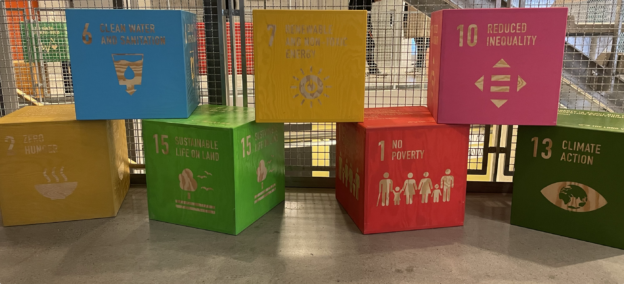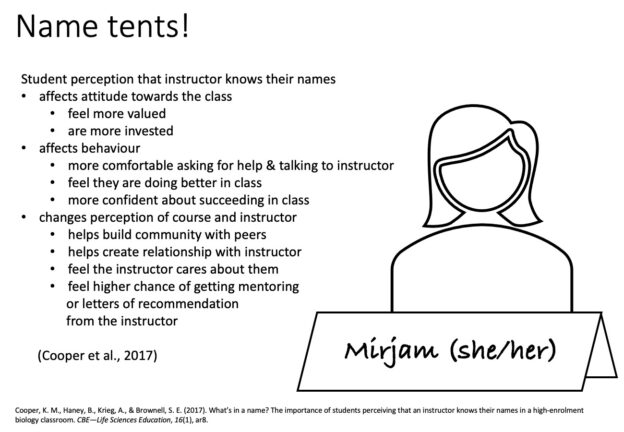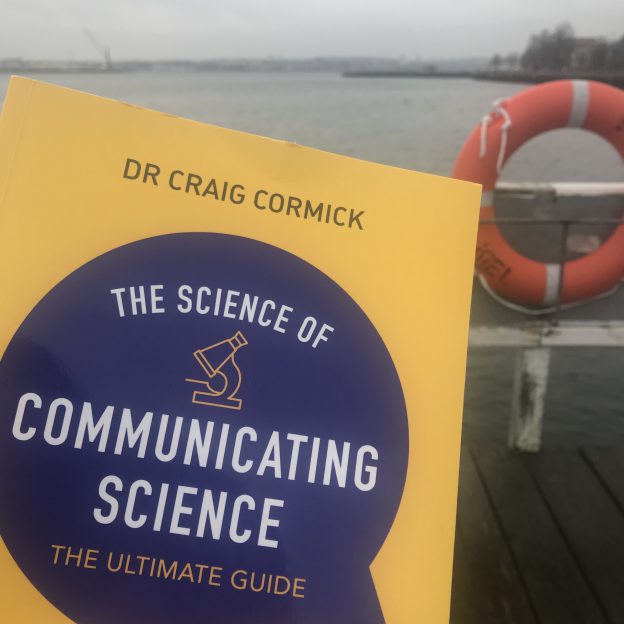(Werbung ohne Auftrag // This blogpost is not sponsored)
I strongly believe that all scicomm efforts should be grounded in the science of science communication. That means reading a lot of original literature, or … reading this book that I recently found. It’s a quick and fun overview over the current understanding of what works and why: “The Science of Communicating Science — The Ultimate Guide” by Craig Cormick.
The Science of Communicating Science
The book is structured in four parts: “The ground rules”, “communication tools”, “when things get hard”, and “science communication issues”. It is a really easy and enjoyable read. It’s full of funny stories and cute sketches that illustrate key concepts, and despite it being pretty much a review of the relevant literature, it’s written in a conversational style. The author brings in a lot of stories that make his points. For example to stress the importance of story telling, he talks about how every last tired student woke up in a lecture once he paused his usual lecturing and said “let me tell you a story!”. Very relatable.
“The ground rules”
This part provides a lot of the background knowledge on scicomm. Why do we need to communicate science? What makes science communication good science communication? What is it that the public knows and believes about science, and how much do they care about science? And is there even such a thing as “the public”? (Spoiler alert: of course not!)
It for example tackles one of the big problems I see in science communication: People believing that they will change other people’s minds with more information (and, it’s quite interesting that in my experience, those people’s minds usually aren’t changed by all the data that contradicts them on that).
This part of the book should definitely be required reading for anyone doing scicomm.
“Communication tools”
In this part, the author deals with many different ways to communicate with audiences, and what is known about them — both the communication tools themselves and what audiences might be reached with which tool. For example for social media, it is important to understand who for example has internet access and who is actually using what channel for what purpose, in order to find the best way to reach your specific audience. Or for TED talks, turns out that the gestures and way you present yourself are super important for how you are being perceived so that it basically doesn’t matter to the ratings whether people watch you with sound on or off. How scary is this?
This part of the book is definitely interesting to browse for an overview over many different tools, and looking at chances and challenges of each. And if you are planning to use, or already using, any of the tools described there, it will be super helpful to look into what the author has to say about it.
“When things get hard”
Now we are getting into the really difficult issues, like for example beliefs. Why do people believe what they believe? And how can we respectfully and constructively deal with people who hold beliefs different from ours? (How) can we change beliefs?
Or another example that I found really interesting because I hadn’t thought about it before, or at least not in those terms, was communicating risk. For risk communication, there are different strategies recommended for audiences that are defined depending on how much they are concerned about a specific risk on the one hand, and how much they are affected by that risk on the other. People in the low concern & low affected corner are an audience that can be communicated with in the way you would normally do scicomm. However, as soon as there is high concern or high risk, things change. For audiences that are highly concerned despite not being highly affected, listening is the key, both to make them feel understood as well as to understand what exactly their concerns are so that you can eventually help them see that despite the concerns they might not be as much as risk as they think they are. But then for people with low levels of concerns but high risk, a completely different approach is needed, one that educates people about the risks they are at. Lastly, people who are both highly concerned and highly at risk are the group that you need to engage with the most. And there are a lot of pointers for how to do that in the book, that I can’t all spill here ;-)
Another chapter in this part of the book that I found really interesting is on changing people’s behaviours. In a nutshell, you don’t change people’s behaviours by changing what they think they should be doing, you change behaviours first and that will lead to a change in attitudes towards the behaviour they are now employing. It’s all about cognitive dissonance and how we are trying to avoid a mismatch between what we say we want to do and what we actually do — usually by changing our attitudes, not our behaviours. So make it easy for people to behave in the way you want them to behave and their attitudes will follow (one of the reasons why I think taxing and fines as tools to influence behaviours should be used a lot more; attitudes will follow…).
This part of the book then concludes with chapters on “communicating controversies” (lots of helpful strategies for if/when you get caught in a shit storm!) and “debunking bunkum” about dealing with pseudoscience.
“Science communication issues”
I really loved this part of the book, because here issues get addressed that we don’t talk about enough, like ethics of scicomm. When we talk about “what works in scicomm”, in a way it’s fair to say that we are talking about ways of manipulating people. We do this with the best intentions, but still, we are basically employing and sharing techniques to make people believe what we believe and act in ways that we think are the right ones. And once in a while it’s good to stop and think about what exactly it is that we are doing there and if we want to adopt existing or develop new guidelines or a code of conduct.
Then there is a chapter on all the caveats of scicomm research. How valid is all the stuff that we think we know about how scicomm works? Very important read!
And lastly, the author ends with an appeal to scicomm researchers to make their findings accessible to practitioners, and for practitioners to dig around if there might already be research available on their formats and topics. To sum it up: “Go and do brilliant things”!
Post scriptum
In my old job in scicomm research, I had the time to read a lot of scientific articles as well as reports, blog posts, etc, and go to workshops, watch youtube, browse social media, etc, to inform myself about the cutting edge science and practice of scicomm. And that’s pretty much a full-time job. Now, with my current job, I still try to keep up to date, but I am really glad I have this foundation of two years full-time focus on scicomm research & practice to fall back on. So I am very much aware of how much there is to learn about scicomm, and how difficult it is to do when that isn’t your primary focus.
I received this book last year, two days before giving an introductory scicomm workshop, and binge-read it to make sure I wasn’t missing anything super important in my workshop. Turns out that the first part of this book, “the ground rules”, is a very good match with what I chose to include as a foundation for my workshop, citing many of the same articles and focusing on very similar topics. If you can’t spend a huge amount of time on diving into the science of scicomm (or attend one of my workshops, obviously ;-)), reading this book is really the best way to get started that I am aware of, and I highly highly recommend reading it! And even if you think you know all there is to know, it’s really refreshing to get a new perspective on things. Still go read the book! :-)
P.S.: A quick overview over the main message of the book (and including some of the fun sketches!) is also given here, by the author himself. So go check that out, too!
P.P.S.: Looking for more to read? Another book I liked a lot and recommended on here about a year ago (when it had just come out): Communicating Climate Change by Armstrong, Krasny & Schuldt.
Literature
“The Science of Communicating Science — The Ultimate Guide” by C. Cormick (2019).
“Communicating Climate Change” by A. K. Armstrong, M. E. Krasny, J. P. Schuldt (2018).



